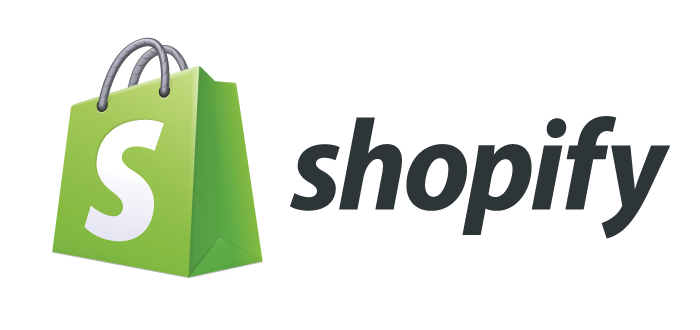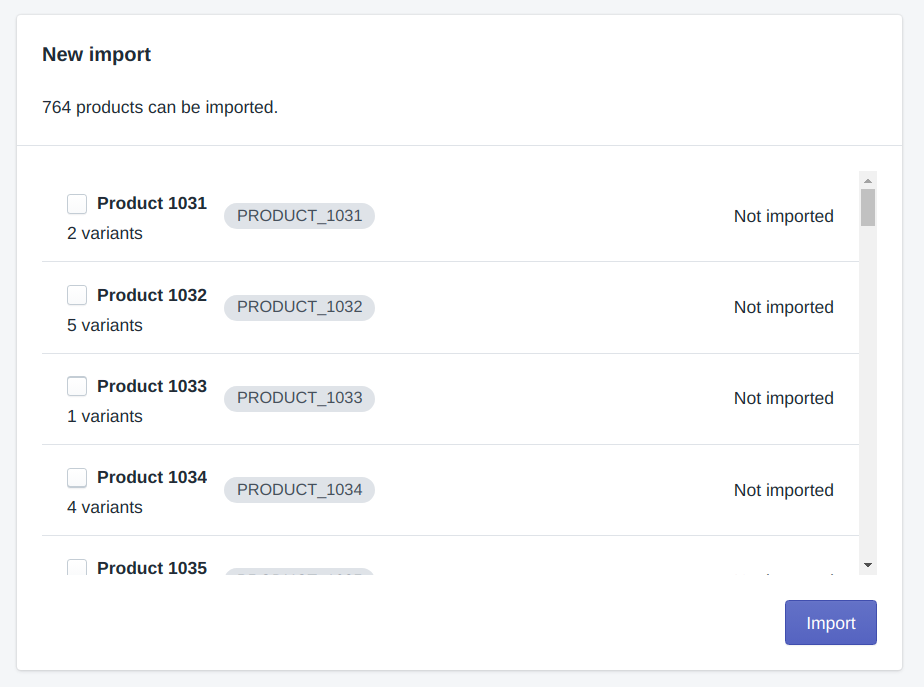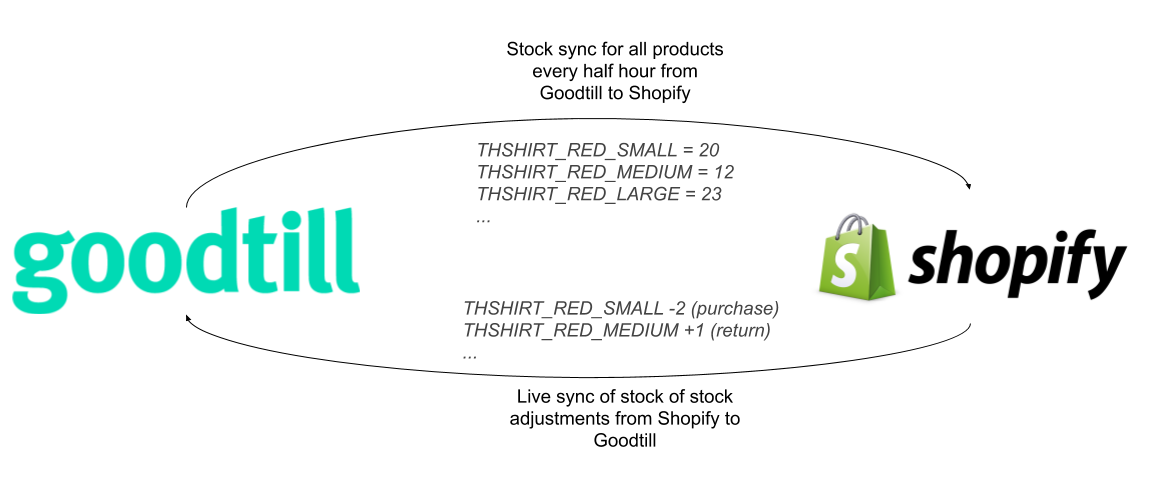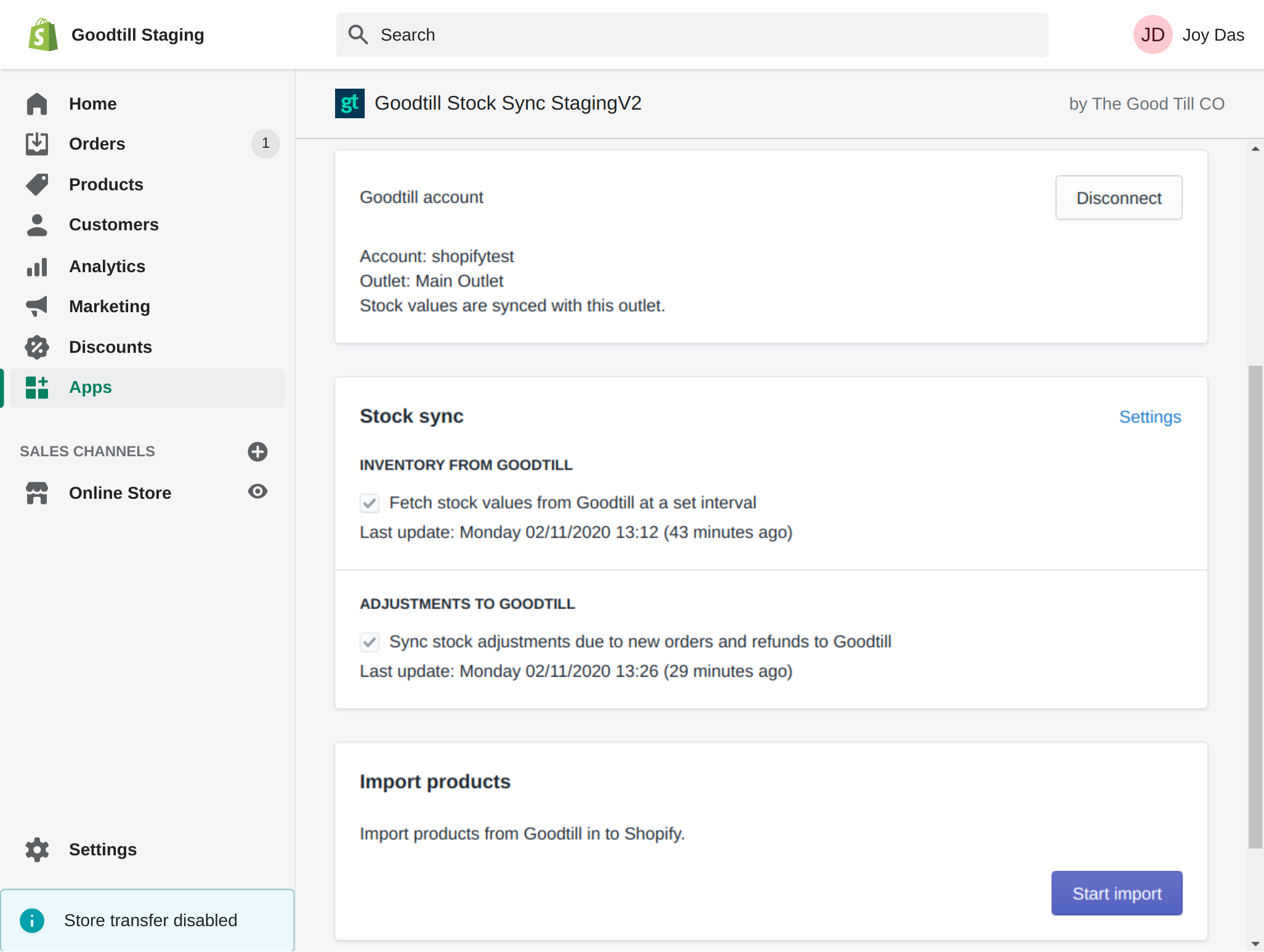
SumUp provides a Shopify app for syncing products and stock levels with SumUp Point of Sale.
This feature requires the E-commerce module, to contact pos.cs.uk.ie@sumup.com to add this module to your account.
App does not support locations
This Shopify app is intended to be used in Shopify shops with a single location. See below for limitations when used with multi-location shops.
Features
Import products into Shopify from SumUp POS
If you are creating a new Shopify store, the plugin allows directly importing all SumUp POS products, or a subsection of products, into Shopify ready for sale on your online store.
Stock syncing
This app allows syncing the stock levels between SumUp POS and Shopify, using SumUp POS as the “master” source of stock values, which are then copied over to Shopify.
Stock levels will be in the following cases:
- The stock values for all published products will be fetched from SumUp POS and updated in Shopify roughly every 10 minutes.
- When an order is placed in Shopify, the stock will immediately be decremented in SumUp POS. The reverse is true in the case of a return or order cancellation.

Stock management
When stock syncing from SumUp POS is active, any changes to stock level within the Shopify inventory interface will not be synced back to the SumUp POS back office. The back office should be used to manage the stock quantity instead.
Not compatible with ingredient stock
Stock sync cannot be used with products using ingredient stock as these products do not have a stock level.
Not compatible with taking stock from parent
Variable products utilising the “take stock from parent” feature cannot be used with the integration as-is. Please contact support regarding how this can be implemented.
Install
Firstly navigate to the Shopify back office, and login to your Shopify account as normal. Then go to Apps > Click on Add > Search for SumUp Stock Sync > Install/Add > Proceed to log in with your POS credentials as prompted.
Multiple locations
This plugin is not designed to be used with stores with multiple locations. If your Shopify shop has more than one location, the functionality will be limited in the following ways:
- Stock values cannot be synced from SumUp POS, because each product will have one stock value per location.
- When an item is sold in Shopify, the stock adjustment will be sent to the connected SumUp POS outlet, even if this does not correlate to the Shopify Location where the product was sold.
Product import
Supported fields
The following fields will be copied over to Shopify when products are imported:
- Name
- Description
- SKU
- Selling price
- Cost price (cost per item)
- Stock quantity
- Category (as type)
- Brand (as vendor)
- Tags
- Tax (whether VAT rate is > 0)
- SumUp POS Product ID (as "goodtill.product_id" metafield)
- Variants
- Name
- SKU
- Selling price
- Cost price (cost per item)
- Stock quantity
- Tax (whether VAT rate is > 0)
- Attributes
- SumUp POS Product ID (as "goodtill.product_id" metafield)
POS product images will not be imported as their small size makes them inappropriate for use in an e-commerce store. Images can instead be added through the Shopify interface.
Requirements
Products can only be imported if the following conditions are met:
- SKU are be present and unique for each product including variants.
- Product does not have more than 100 variants.
- Product and/or variants not set to inactive.
- No variants do utilise parent stock.
FAQs
What do I need to get started?
- A SumUp POS account with the E-commerce module enabled.
- Your SumUp POS back office login details for either the store owner user or any user with Admin privileges.
- A Shopify store.
Does the plugin support products with variants and attributes?
Yes, products with variants and attributes are supported.
Can I set different product details in the two systems?
Yes. Product pricing will not be synced after the initial import, allowing you to manage the prices in both systems independently.
How does stock syncing affect the Shopify out of stock state?
Shopify will mark the product as out of stock if the quantity in SumUp POS is 0 or the product has track inventory disabled. You can disable stock syncing for a product by changing the “Inventory Policy” and “Fulfilment Service” to Shopify instead of SumUp POS.
Why might my products stock levels not sync?
If products are matched by SKU, this may be due to:
- The product may share its SKU with another product or one of its variants.
- The SKUs may be different in SumUp POS and Shopify.
Can I disable the app after importing products?
The plugin can safely be disabled at any time if you do not need the stock syncing functionality.
Can I connect more than one Shopify store to the same SumUp POS store?
Yes – this will not cause any problems. If a product is sold in store A, the stock will be decremented in store A and SumUp POS. Within the next hour, store B will be updated with the new lower stock value from SumUp POS.
However please note we don't support different Shopify locations.
There can be multiple Shopify locations, but currently the integration isn't set up to know which location to send the outlet stock value to. So currently if you have more than one location, we won't update the SumUp POS stock level to Shopify.
If a new Shopify order is made, the stock in SumUp POS will be decremented accordingly. However, this new stock level won't appear in Shopify.
If this is a feature you would like to see, please raise a request for it here.

